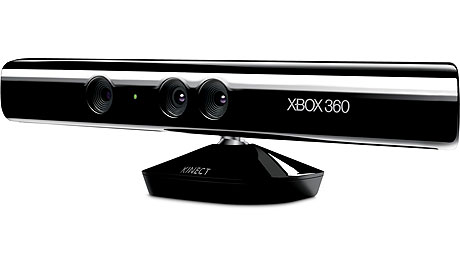
Kinect
Read over on 360 Kombo this blog post by Alex Bader regarding Kinect. Drawing from an interview on Gamasutra, It outlines Microsoft’s software strategy for the yet-released motion control (natural movement interface device) add-on to 360. Alex opens with:
Microsoft is trying to attract Wii gamers with their Kinect advertising scheme, there’s no doubt about it. The difference is, however, Microsoft doesn’t want this new platform to be plagued with the endless shovelware that Nintendo’s platform has faced since its initiation.
Shovelware plague? If a “plague” brought with it success and riches beyond my wildest dreams I’d hardly deride it. Nor would I think of altering the plague in hopes of re-creating that success the came with it. If plague = success, then more plague, please!
Alex goes on to quote Microsoft’s director of platform marketing for Xbox, Albert Penello as saying,
We don’t want shovelware, we don’t want ports, we don’t want stuff with motion controls tacked onto it.
Makes me wonder… are they launching a platform or an ideal? Has anyone thought of the positive benefits of “shovelware” or the model which allows it to exist? Ports are bad, why? Seems to me they neatly attract an existing audience to a new product badly in need of support and interest. “Stuff with motion controls tacked onto it…” but what if this is how developers and consumers learn about the new paradigm – in the safety of what they already understand? Evolution doesn’t happen over night. Not for game creators, nor for the audiences that buy their products.
Albert continues (in the Gamasutra interview),
We continue to say that the controller is the best experience for controller games. When people say, ‘Why don’t you have Halo?’ Well, I don’t want Halo on Kinect. I want Halo on a controller. Now would it be interesting to see what kind of game they could make using Kinect? Yeah, I would love to see what those guys could do, or what the Call of Duty guys could do. But I don’t want to play Call of Duty 4, I want Call of Duty: Black Ops on the controller. So yeah, I’m really, really happy with the stuff that [publishers] are doing. … The most interesting stuff is going to be what comes out six months to a year from now when people come to grips with the technology and really start taking advantage of it.
The MS strategy really seems to emphasis constraints – which are fine and good when developing creative content. But the constraints are in the wrong places – constrain how developers and consumers interface with the platform (as Nintendo did) by releasing a console with motion control as the ONLY input option. The creates a demand for original ideas and innovation to solve the most basic problem of getting known-genres to work on new hardware. A giant audience awaits, Nintendo proved it – we just have to solve this problem … except that the MS strategy says “you don’t have to solve it, just use controllers with controller games”. That’s a pretty half-assed paradigm shift.
Further, I’d argue that the evolutionary timescale will be longer than 6 months or a year – because the environment for exploration of new concepts hasn’t been put in place. Stifle exploration and you limit discovery.
If MS asked me I’d say, “build a model for online distribution of Kinect ‘applets’ and allow anyone to submit content to it”. This is the iPhone/App Store model combined with a potentially revolutionary bit of interface hardware. Let the market and innovators drive it towards best possible use cases. It’ll happen so fast and make so much money you won’t even notice the shovelware.
I’ve got nothing but love for MS and a piece of hardware which might move us away from the dark ages of mice, keyboards and controllers. Wii did it. Kinect can improve on it – certainly in terms of hardware and natural interface (I know, we’re doing R&D with one at Spicy Horse). But if the nature of the launch/publishing model isn’t as natural and innovative as the hardware, then the thing’s destined to fail. And that would be a real shame – not just for MS, but for developers and gamers alike.
Here’s hoping they open the floodgates before its too late.


